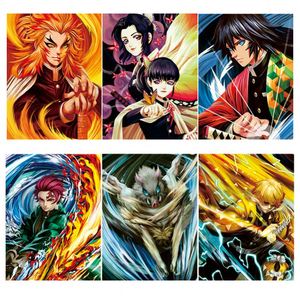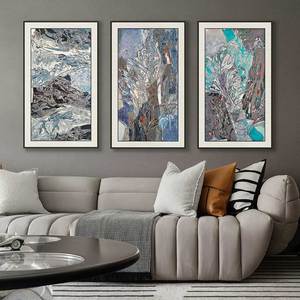(236 products available)


























































































 Ready to Ship
Ready to Ship

















 Ready to Ship
Ready to Ship







































































A 3D scenery poster is a kind of poster with a three-dimensional view. It is printed with different dimensions to create a 3D effect. These posters are usually put on walls to make the room look more spacious and attractive. They are often used in theaters, cinemas, showrooms, and shops, but they can also be used at home. There are several types of 3D scenery posters to choose from.
Layered posters
These posters use a technique called parallax, which creates depth by having layers of images. The layers are printed on different materials, such as acrylic or foam board, to make them stand out. Acrylic and foam layered posters are durable and water-resistant, making them suitable for high-moisture environments like bathrooms or kitchens.
Anamorphic posters
Anamorphic posters create a 3D illusion when viewed from a specific angle. These posters use distorted images that appear normal when viewed through a specific perspective. They are often used on sidewalks or building walls to create a stunning visual impact. They are usually big-sized posters that can be placed in public areas or outdoor spaces.
Augmented reality (AR) posters
AR posters integrate digital content into the physical world. Users can use their smartphones to scan the poster and see animations, videos, or 3D models related to the poster content. AR posters are engaging and interactive, making them suitable for education, marketing, and entertainment. These posters do not have any physical layers but offer an immersive experience to users.
Lenticular posters
Lenticular posters use lenticular lenses to create the illusion of depth and motion. These lenses have many thin, curved stripes that make images look 3D or move when viewed from different angles. They can show different pictures as one moves past the poster or make parts of a picture seem to pop out. These posters can be used anywhere, from classrooms to shops.
Layered Design:
3D posters are made by layering different designs.
Each design has a different size and depth so that they look like they are at different distances from each other. When these layers are put together, they create a 3D effect that makes the picture seem to pop out.
Shadow and Light Play:
Lighting matters a lot for 3D posters. By cleverly using shadows and highlights, the designers make some parts of the picture look closer or farther away than others. This shadow and light play adds to the depth and 3D look of the poster.
Perspective Techniques:
Perspective is a technique where the picture is designed so that things meant to look farther away are made smaller, and things meant to look closer are made larger. This is applied to the whole poster so that it appears 3D when viewed.
Materials Matter:
3D posters use special materials that help create the effects. For instance, some material choices are translucent, which lets light pass through and creates a 3D illusion. Other materials have textures like bumps or ridges that can be felt and seen, making the layers stand out even more from each other.
Interactivity:
Some 3D posters are designed to be interactive. This means that viewers can touch different parts of the poster or move certain pieces, which makes the 3D effect even better. Interactivity keeps people interested and adds an extra dimension to enjoying the scenery on the poster.
Size and Scale Considerations:
The size of the poster also affects how realistic everything looks. A bigger poster allows for more detail in all the layering, lighting, perspective, materials used, and interactivity. So, designers carefully choose a suitable scale to show everything as lifelike as possible within its 3D space.
3D scenery posters serve a variety of purposes across different industries and can be used to enhance visual experiences in many settings.
Theater and Film Industry:
3D scenery posters are used as backdrops for theater productions, film sets, and television shows. They create a realistic environment and enhance the storytelling experience. For example, a play set in a forest can use a 3D poster of trees and foliage to make the stage look like a natural wilderness.
Concerts and Events:
At concerts and live events, 3D posters are used as stage backdrops or as part of the visual display. They can create stunning effects that complement the performance. For instance, a rock concert could have a 3D poster of a fiery landscape behind the band, adding to the excitement and energy of the show.
Museums and Exhibitions:
Museums and exhibition spaces use 3D posters to enhance displays and exhibits. These posters can create immersive experiences for visitors. A history museum, for example, might have a 3D poster of an ancient city as part of an exhibit on early civilizations, allowing visitors to see what the world looked like long ago.
Retail and Advertising:
In retail environments, 3D posters are used for advertising and promotions. They can attract customers' attention and create a memorable shopping experience. A clothing store, for instance, might have a 3D poster showing models wearing the latest fashion against a vibrant urban backdrop, making the advertisement more engaging and dynamic.
Education and Training:
Educational institutions and training centers use 3D posters for instructional purposes. They can help visualize complex concepts and enhance learning. A medical school, for example, might use a 3D poster showing the human anatomy to help students understand how the body works.
Interior Design and Architecture:
Interior designers and architects use 3D posters for presentations and design proposals. They can showcase design ideas and create a realistic impression of the space. An interior designer, for instance, might use a 3D poster showing a tropical beach landscape to present a design for a hotel lobby, giving the client an idea of what the space will look like.
From material to theme, there are many things to consider when choosing the perfect 3D scenery poster.
Purpose and location
Three-dimensional posters can be used to decorate a space or in presentations. The intended use of the poster will determine the things one should pay attention to when choosing it. For example, if the poster is to be placed in a dimly lit area, one may want to choose a poster made of a material that reflects light to make the poster visible. The location will also determine the material one should choose. If the poster is placed in a location where it is more likely to get damaged, a plastic or laminated material may be more appropriate.
Material
3D posters are made from different materials, including paper, acrylic, and foam. Each of these has its advantages. Paper is cost-effective and easy to transport, while acrylic and foam offer greater depth and durability. Choose a material that is suitable for the place the poster will be used at.
Theme and aesthetics
Choose a 3D poster that has a theme that matches the decor of the space it will occupy. For instance, a nature-themed poster will be more appropriate for a space that has a natural theme. The colors of the poster should also complement the colors in the space it will occupy.
Quality of the poster
The clarity of the images on the poster should be checked. The images should be sharp and clear. The details of the scenery should be visible. Posters with blurry images should be avoided. In addition, the poster should have vibrant colors. The colors should not be dull or faded. A good poster should have colors that are true to life and that stand out. Another thing to look out for when checking the quality of the poster is the depth of the 3D effect. The layers of the poster should be well arranged. The depth of the layers should be uniform throughout the poster.
Q1: What are 3D scenery posters made of?
A1: 3D scenery posters are printed on special paper. This paper is strong and can take colors well. Sometimes, they use other materials like acrylic or wood to make the posters look better in 3D.
Q2: How should one take care of a 3D scenery poster?
A2: To take care of these posters, keep them out of direct sunlight to prevent fading. Also, avoid places with extreme heat or cold. Cleaning the poster gently with a dry cloth is also essential.
Q3: Can 3D scenery posters be customized?
A3: Yes, many sellers allow customization. People can choose their designs, sizes, and sometimes the materials used for their posters.
Q4: How long does it take to get a 3D scenery poster?
A4: The time it takes to get a 3D scenery poster depends on the seller and how they make it. A standard poster might take a few days, but custom posters could take longer.
Q5: What is the size range for 3D scenery posters?
A5: 3D scenery posters come in many sizes. They can be small to fit a desk or large to cover an entire wall. People can usually choose the size they want.